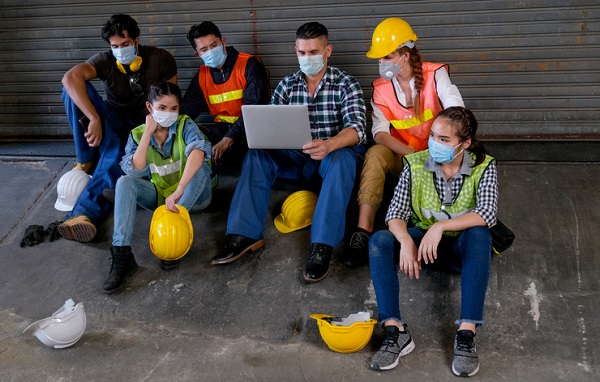6 construction mistakes home builders should avoid
Builders always try to avoid construction mistakes in their homes. But some mistakes are common and can make the experience of home ownership less than ideal for your buyers. Even worse, these mistakes can cost you financially and in terms of your reputation. If you can avoid these common construction mistakes, you can make your homes higher quality, more comfortable and more energy efficient.
Ductwork in unconditioned spaces
Placing ductwork in an unconditioned space, such as an attic or crawl space, is a common construction mistake. When you place ductwork in unconditioned areas, that ductwork is essentially outside. This can lead to a ton of wasted energy because any airflow that passes through the ducts can leak into the unconditioned space. Likewise, outside air can enter the ductwork. This causes not only unnecessarily high energy bills but also makes the house less comfortable for homeowners.
Instead, run ductwork through conditioned spaces within the thermal envelope. (The thermal envelope is what separates the interior from the exterior of the home.) This reduces energy costs, allows for a more even distribution of airflow and can even reduce labor costs.
Not sealing duct seams
Another common construction mistake is forgetting to seal ductwork. Leaky ducts cause uncomfortable surroundings and higher-than-necessary energy bills. Fortunately, this is a simple mistake to catch. Just check the duct seams for mastic tape or high-quality aluminum tape (not duct tape). If it’s not present, add it.
Using oversized HVAC elements inappropriately
Bigger isn’t always better, especially when it comes to HVAC elements. Oversized furnaces and air conditioners tend to cost more, both in upfront and long-term costs. For example, oversized air conditioners may cool a room quickly, but they also tend to make the rooms they cool strangely humid. Cold and humid is often uncomfortable for homeowners and can lead to poor air quality, which many homeowners consider a huge problem.
Likewise, an oversized furnace might heat a room more quickly, but the downsides outweigh this. Oversized furnaces tend to short cycle (i.e., reach the ideal temperature, stop and then start up soon after), which causes excessive wear on its components.
Instead of using common oversized HVAC elements, consider referring to the Air Conditioning Contractors of America’s (ACCA) Manual J® calculations to properly size the unit. This will likely lead to lower costs and more appropriate HVAC elements in your homes.
Improper installation of building wrap
Installing your building wrap improperly can cause catastrophic problems down the line. While it may be tempting to get building wrap up as quickly as possible, be sure to do it right. Follow the manufacturer’s instructions. Failing to do so can lead to water leaks, mold and mildew inside your walls, and you often won’t see any signs of a problem until the damage is too extensive to address cost effectively.
Forgetting basement insulation or installing insulation improperly in the house
Sometimes, builders forget to (or simply choose not to) insulate basements in the homes they build. There are many consequences when a basement goes uninsulated. For example, any mechanical systems in an uninsulated basement are exposed to temperature fluctuations, which can damage them. A lack of insulation can also lead to water damage and pests like termites.
Another common insulation issue is improperly installing insulation. First, you should always follow the US Department of Energy’s (DOE) guidance on insulation for new-home construction in terms of energy efficiency. One thing you may find is that the DOE’s recommendations exceed local recommendations.
Second, as you insulate the home, make sure that you’re installing the insulation properly. For example, if your insulation is poorly compressed, it may settle. This settling can cause the wall’s R-value to drop, which can make the home much less comfortable and less energy efficient.
Not having a builders warranty from 2-10 HBW
Okay, this may not be a construction mistake, but not having industry-leading coverage from 2-10 Home Buyers Warranty (2-10 HBW) on the homes you build can be a mistake for your bottom line and reputation. A 2-10 HBW builders warranty can help you avoid many of the above mistakes because it provides clear performance standards regarding both workmanship and distribution systems. This third-party validation can be invaluable to your potential buyers and acts as a great differentiator for your homes.
In addition, a builders warranty protects your future by covering your past. If something goes wrong structurally with a home you built within the Statute of Repose for your state, a 2-10 HBW builders warranty can relieve you of financial liabilities to address the problem. That helps you focus on the thing you do best—building quality homes.
Learn how you can protect your business and add valuable selling points to your new builds with a 2-10 HBW structural warranty.








